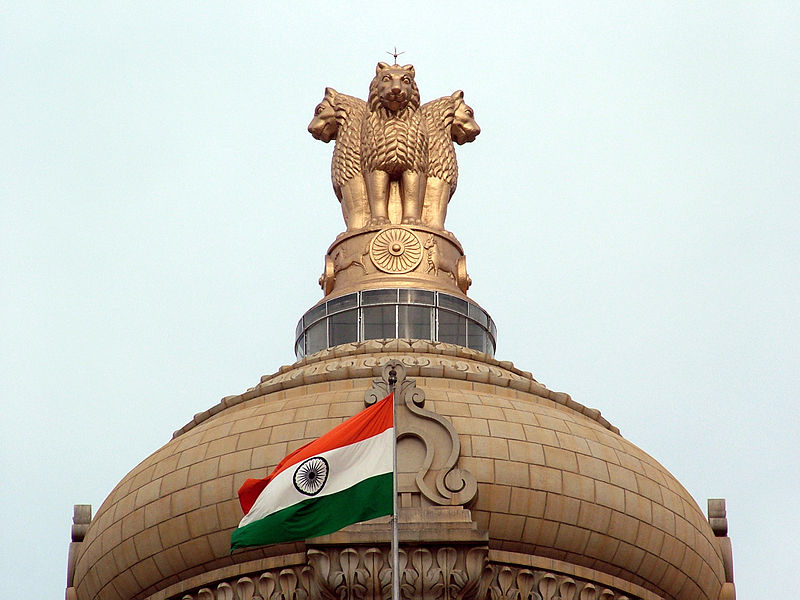Essay on the Judiciary System in India – Laws have no meaning without adequate enforcement that is why our Constitution has put in place an elaborate judicial system with the Supreme Court at the apex.
The framers of the Constitution were aware that political power has to be effectively checked so that it is used only for the prescribed purpose and only in the prescribed manner.
If Parliament enacts a law that runs against the word or spirit of the Constitution, Supreme Court exercising the power of judicial review can strike it down as unconstitutional. An arbitrary executive action, too, can be checked in the like manner by judicial action.
ADVERTISEMENTS:
The doctrine of basic structure evolved and applied by the Supreme Court has ensured that Parliament could not go on amending the Constitution to achieve shallow political gains. In the past fifty-five years Judiciary has been that wing of the State that has not only consistently performed its own duties but also made the other two wings perform theirs.
In India the body of law constitutes the Constitution, at the very top and as the source of all laws, and then there are laws enacted by Parliament and State legislatures.
Judicial decisions of the higher courts crystallize the law and sometimes act as precedent if the area is unoccupied for lack of legislation. Certain customs of long standing are considered to be customary laws so far as they do not contravene any express provision of law.
ADVERTISEMENTS:
Besides these, the executive wing of the State also makes a variety of rules, regulations and bye-laws under the authority conferred by the Legislature. This is known as delegated legislation.
We have a single integrated system of Courts to administer both the Union and State laws. This uniformity of judicial structure has been achieved by placing the relevant areas of civil and criminal law in the Concurrent List.
We have, at the apex, the Supreme Court, with a High Court for each State or group of States. Under the High Courts are Subordinate Courts. The whole country is divided into judicial districts starting with Nyaya Panchayats at the village level.
Supreme Court:
ADVERTISEMENTS:
It consists of the Chief Justice and 25 other Judges. They are appointed by the President in consultation with the Chief Justice.
For appointment as a Judge of the Supreme Court, a person must be a citizen of India, must have been a judge of a High Court for a minimum of five years, or an advocate of a High Court for ten years, or he must be, in the opinion of the President, a distinguished jurist. The age of retirement is 65 years.
Independence of fudges: If a society based on rule of law and social justice is to be achieved, it is important that justice is administered without fear or favour.
Our Constitution, therefore, seeks to preserve and promote the independence of judges through various means. Salaries and conditions of service for the judges are fixed and cannot be varied to the disadvantage of the Judge during his tenure in the office.
As per ruling of S.R. Bommai v. Union of India, the advice of the Chief Justice with regard to the appointment, promotion and transfer of judges is binding on the President.
Removal of Judges: In order to ensure that the fear of removal does make our judges pliant, the Constitution provides for an extremely cumbersome process for the removal of a judge under Article 124(4).
The only ground on which a Judge of the Supreme Court or High Court can be removed is proved misbehaviour or incapacity. A judge can only be removed by an order of the President passed after an address in each House of Parliament.
Such address must be supported by a majority of the total membership of that House and by a majority of not less than two-thirds of members present and voting.
It must be presented to the President in the same Session. In the judicial history of India no judge has ever been impeached though the proceeding for impeachment had been once initiated against Justice Ramaswamy.
Jurisdiction of the Supreme Court:
The Supreme Court of India exercises three kinds of jurisdictions – Original Jurisdiction, Appellate Jurisdiction and Advisory Jurisdiction.
(1) Original Jurisdiction:
Supreme Court, under its Original Jurisdiction, adjudicates in matters concerning disputes between the Centre and State, and also between or among individual States. A citizen might also approach the apex court directly under Article 32 if any of the fundamental rights is violated.
(2) Appellate Jurisdiction:
Under its Appellate Jurisdiction the Supreme Court sits as a court of final appeal in all matters – Constitutional, Civil, Criminal and others.
(3) Advisory Jurisdiction:
Under the Advisory jurisdiction (Article 143), the President can refer any question of law or fact of public importance to the Supreme Court for its advisory opinion thereon.
Article 129 of the Constitution declares that the Supreme Court is a Court of Record, which means that its decisions have precedent value. In other words, the decision of the Supreme Court not only settles a legal matter but also sets a precedent to be followed by all courts throughout the country. The Supreme Court has the power to punish for its own contempt.
High Courts: High Courts are at the apex of State’s judicial structure. There are 21 High Courts in India. The National Capital Territory of Delhi has a High Court of its own. Each High Court consists of a Chief Justice and such other judges as the President may from time to time appoint.
The judges of the High Court are appointed by the President in consultation with the Chief Justice of India, the Governor of the State concerned and the Chief Justice of the concerned High Court. They hold office till the age of 62 years. The High Courts are also Courts of Record and their decisions are binding on all the courts subordinate to them.

